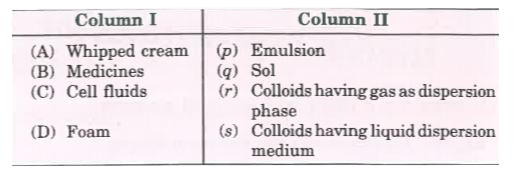Match the activity given in Column I with the type of pollution created by it given in Column II.
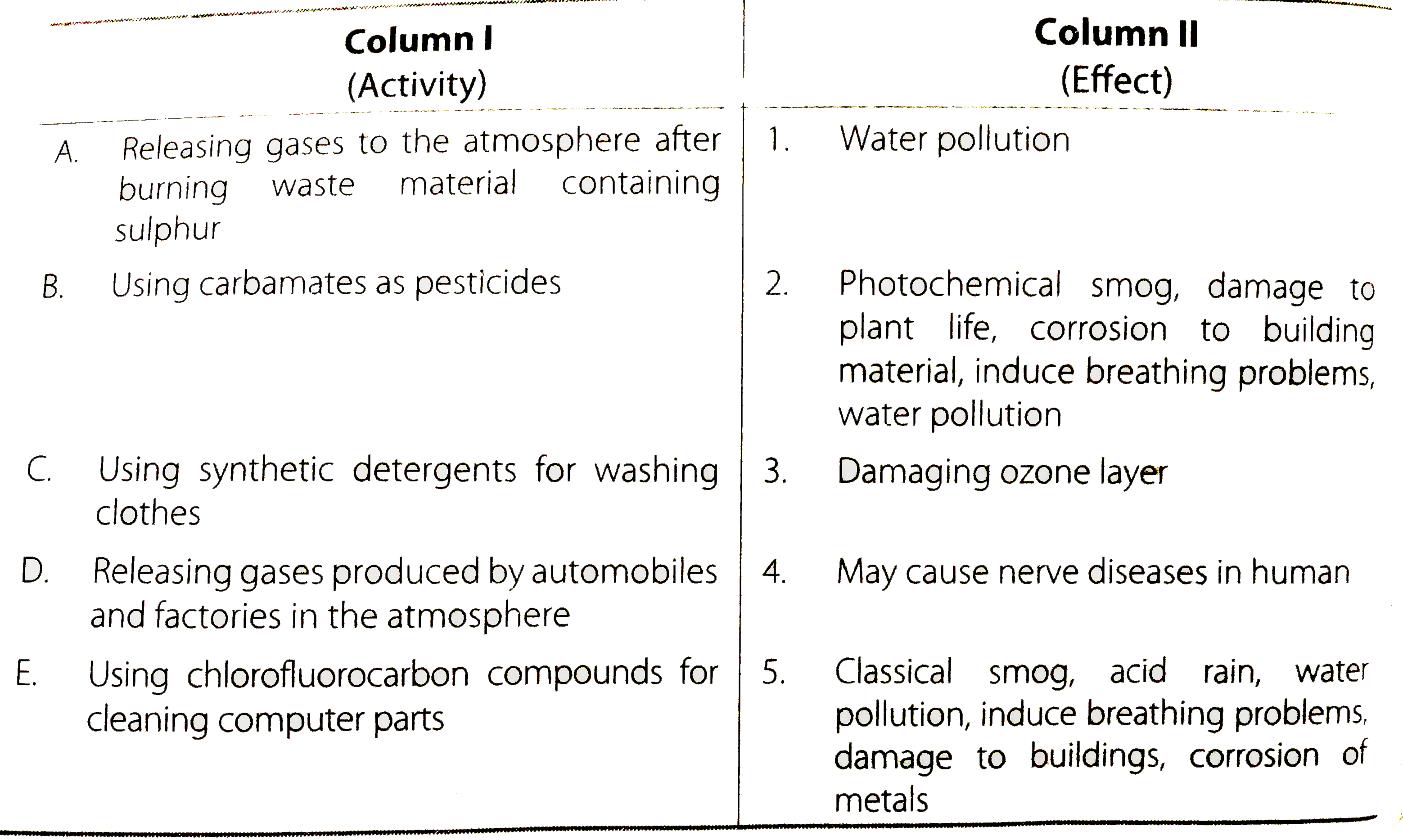
The correct Answer is:a-v; b-iv; c-i; d-ii; e-iii
Step by step video, text & image solution for Match the activity given in Column I with the type of pollution created by it given in Column II. by Chemistry experts to help you in doubts & scoring excellent marks in Class 11 exams.
Topper's Solved these Questions
- BOOK - DINESH PUBLICATIONCHAPTER - ENVIRONMENTAL CHEMISTRYEXERCISE - ASSERTION-REASON TYPE QUESTIONS7videos
ENVIRONMENTAL CHEMISTRY
- BOOK - DINESH PUBLICATIONCHAPTER - ENVIRONMENTAL CHEMISTRYEXERCISE - Very Short Answer Questions4videos
ENVIRONMENTAL CHEMISTRY
- BOOK - DINESH PUBLICATIONCHAPTER - ENVIRONMENTAL CHEMISTRYEXERCISE - Multiple Correct Options4videos
ENVIRONMENTAL CHEMISTRY
- BOOK - DINESH PUBLICATIONCHAPTER - CLASSIFICATION OF ELEMENTS AND PERIODICITY IN PROPERTIESEXERCISE - All Questions310videos
CLASSIFICATION OF ELEMENTS AND PERIODICITY IN PROPERTIES
- BOOK - DINESH PUBLICATIONCHAPTER - EQUILIBRIUMEXERCISE - Matrix - Match Type Questions2videos
EQUILIBRIUM
Similar Questions
Knowledge Check
- Question 1 - Select One
Observe the table given below and match the reaction given in column I with the type of reaction given in column II.
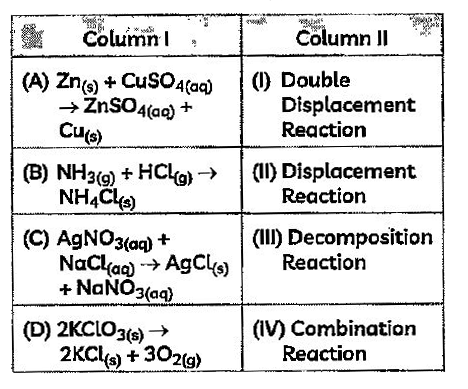 A(A)-(I), (B) - (IV), (C) - (II),(D)-(III)B(A)- (I), (B) - (IV), (C) - (III), (D) - (II)C(A)- (II), (B) - (IV): (C) - (III), (D) - (I)D(A)- (I), (B) - (IV), (C) - (I), (D) - (III)
A(A)-(I), (B) - (IV), (C) - (II),(D)-(III)B(A)- (I), (B) - (IV), (C) - (III), (D) - (II)C(A)- (II), (B) - (IV): (C) - (III), (D) - (I)D(A)- (I), (B) - (IV), (C) - (I), (D) - (III)
Match the polymers given in column I with the type of linkage present in them given in column II
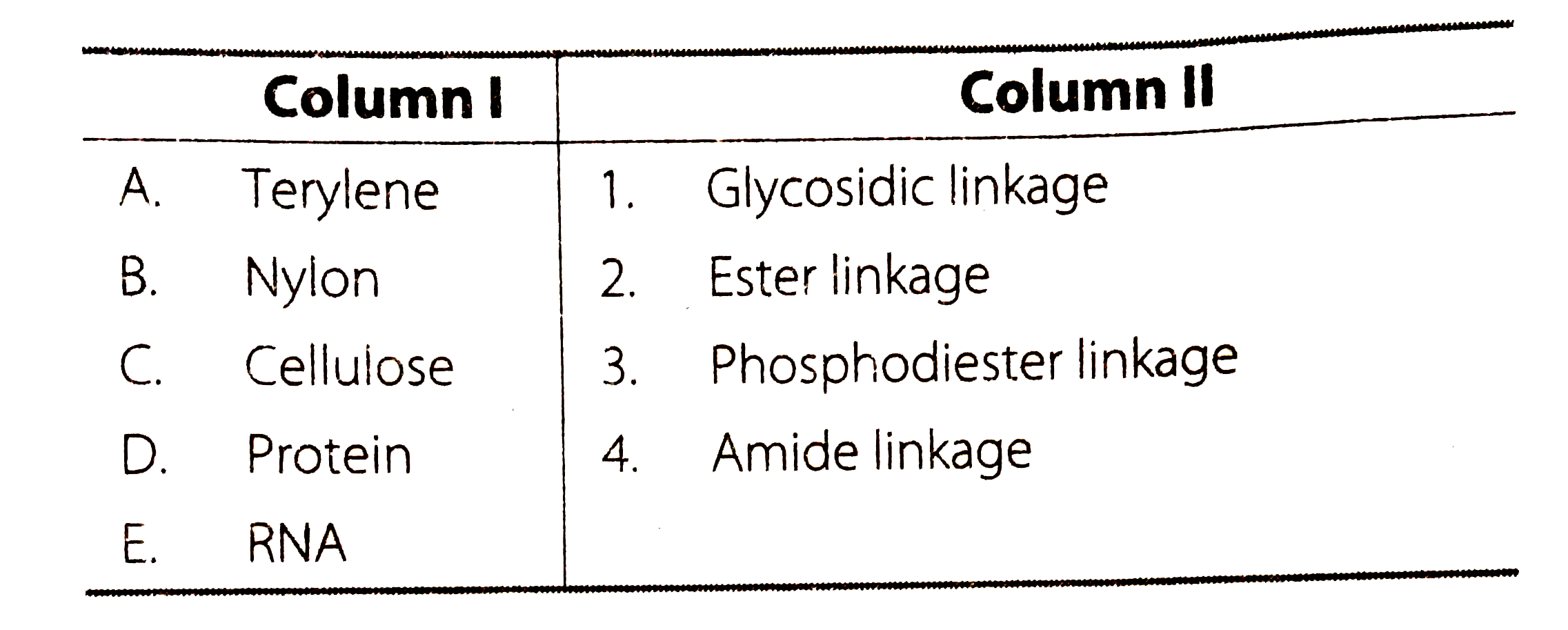 View Solution
View SolutionMatch the reactions given in Column I with the types of reactions given in Column II.
 View Solution
View SolutionMatch the reactions given in column I with the types of reactions given in column II.
 .View Solution
.View SolutionMatch the reactions given in Column I with the types of reactions given in Column II.
 View Solution
View SolutionMatch structures given in Column I with the type of detergents given in Column II.
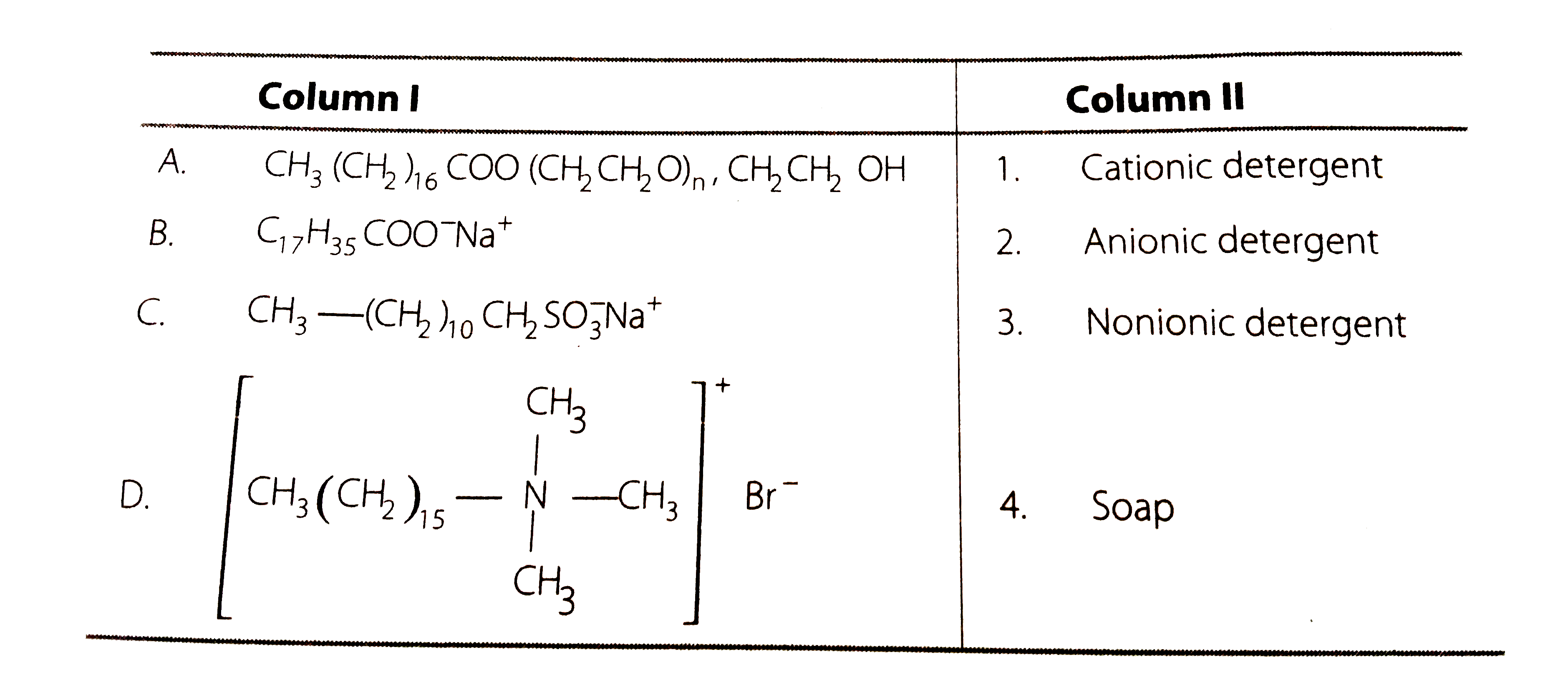 View Solution
View SolutionMatch the reactions given in Column I with the types of reactions given in Column II.
 View Solution
View SolutionMethod of formation of solution is given in Column I. Match it with the type of solution given in Column II.
 View Solution
View Solution


